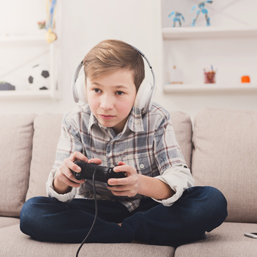
The law is often unclear about this. From a parenting perspective, the answer to this question lies with you and your child. There is no magic number when every child in your home will be ready. It requires a group of skills that need to be taught over time. This article will help you sort through the pieces of the puzzle and put them together in a way that fits for each child in your family.
Does your child believe they are ready? Some kids are full of courage and can’t wait for the opportunity. Others will be too scared to contemplate it. Let’s remember two things:
Discuss safety scenarios that fit your situation. Once your child is on board to learn how to be at home alone, imagining challenging situations and problem-solving them together is a great way to determine their knowledge and readiness. Will they be allowed to eat while you are gone? What about cooking? What would they do if they felt scared? Who could they call for help? What if someone rings the doorbell? What if they run out of toilet paper? The trick here is to make it fun and exploratory rather than an inquisition. Brainstorm and note scenarios on pieces of paper, pull one or two out of a hat and see what solutions your child suggests. This could be great conversation on a car ride or a walk.
There is a difference between staying home alone and babysitting a sibling. Just because a child seems ready to manage on their own, this does not indicate readiness to care for another human’s fears, difficulties, entertainment, and discipline. However, two kids who are close in age might make a great team to stay home alone and elevate the courage required for the adventure. Teamwork means that they are each looking after the other and working together.
What if you aren’t the person to teach your child the skills needed for this endeavor? Have no fear! The great people at Child Safe Canada have you covered. They teach the Home Alone Safety Program, Babysitting, and First Aid. I’ve watched countless children walk out of their programs feeling prepared for the challenge and eager to share their learning.
Practice makes everything better and is easy to work into your day. Pick a time when you will head to the basement, or somewhere out of earshot. Keep it short to start and then make it longer. Plan with your child what they’ll do during that time and how they’ll handle whatever comes along. Everyone will have the peace of mind that you are still in the building, and they’ll give it a dry run. You could even leave a toilet roll un-replaced, or have a neighbor pretend to deliver a package as a test run. Have them practice calling the people who they would call if they had questions. Do they know how to make the call? What will they say?
Practicing for kids being home alone is really part of a bigger family plan or practice, which focuses on what to do if there was an emergency at home. Do your kids know multiple ways they would get out of your house in a fire? Do they know where you would plan to meet outside? Are there neighbors to ask if something happened to you, and they needed to get help? Do they know how and when to call 911? Do they know their address and important phone numbers? If they don’t, this might be the best place to start before contemplating them being at home on their own.
Tiny test drive: When all the other puzzle pieces align, start small and easy. Ten minutes alone during the day is easier than 4 hours at night. Plan a time where you will pop over to the neighbor’s to borrow a cup of sugar or take a walk around the block. Make sure your child knows the expectations and what to do if there’s a problem. Who will they call if they need someone?
When it works well, plan for another, slightly longer test drive. When it doesn’t all go according to plan, take a deep breath, and calmly do the following:
Author, blogger, podcast host and parenting expert, Julie Freedman Smith has been supporting parents across North America for 20 years. Through her company JFS Parent Education, she helps parents find relief from their everyday parenting challenges. Want to know how she can help you? Email her today: This email address is being protected from spambots. You need JavaScript enabled to view it..
Calgary’s Child Magazine © 2024 Calgary’s Child